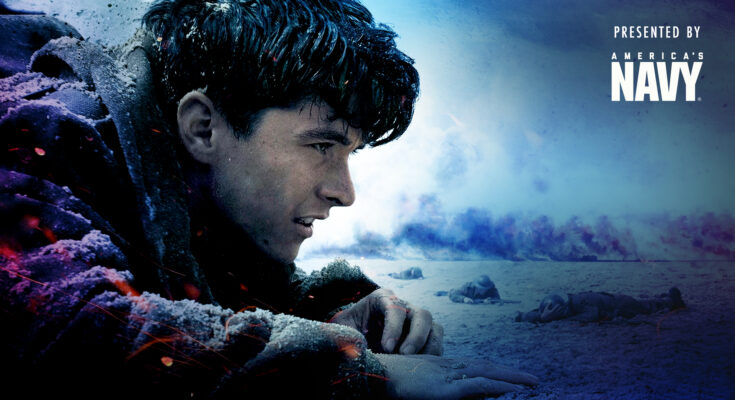Genre: War | Historical Drama | Survival Thriller
Eight years ago, Christopher Nolan’s Dunkirk stormed into theaters and instantly cemented its place as one of the most gripping and innovative war films of the 21st century. Nolan, known for bending time and narrative structure in films like Inception and Interstellar, brought his signature style to a real historical event—the harrowing evacuation of Allied soldiers from the beaches of Dunkirk, France, during World War II.
Told through three interwoven timelines—land, sea, and air—Dunkirk isn’t just a war film; it’s a nerve-wracking survival story that places the audience right inside the chaos and desperation. The film captures the ordeal through minimal dialogue, visceral visuals, and an unrelenting score by Hans Zimmer that pounds like a racing heartbeat.
On the beach, young soldiers wait for rescue while enemy planes strafe overhead and torpedoes stalk the waters. On the sea, civilian boats cross the perilous Channel to bring the boys home, driven by quiet bravery and stubborn hope. In the air, RAF pilots battle to protect the evacuation, outnumbered but fiercely determined. Nolan’s use of practical effects, real ships, and IMAX cameras makes every scene feel terrifyingly real, as if you’re standing in the sand with explosions all around or strapped into the cockpit with fuel running low and enemy fighters on your tail.
Dunkirk doesn’t focus on a single hero but instead finds its power in collective courage. It’s about survival, sacrifice, and the extraordinary will to endure when all seems lost. For many, it remains one of Nolan’s most daring works—stripped down, relentless, and striking in its simplicity. Even years later, its ticking-clock tension and haunting images stay with you, a reminder that some victories are measured not in battles won, but in lives saved against impossible odds.



